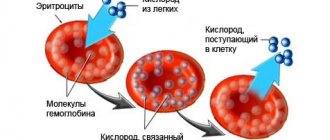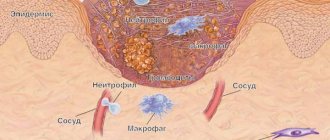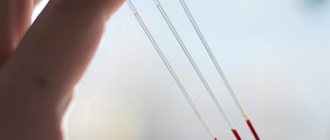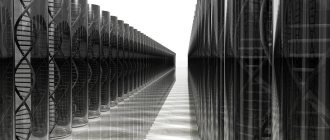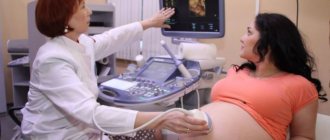Blood tests for total and direct bilirubin
Analysis 1. Determination of the content of total (direct + indirect) bilirubin in blood serum.
Analysis 2. Determination of indirect bilirubin content in blood serum.
The collection of biological material is carried out by: Only a laboratory assistant
Biological material for research: Blood from a finger or from a vein
Other names of the study in Russian:
Total bilirubin , total blood bilirubin, total serum bilirubin, bile pigment, breakdown product of hemoglobin.
Direct bilirubin , conjugated bilirubin, conjugated bilirubin, newborn bilirubin.
Titles of the study in English:
Total bilirubin: Bilirubin Total, TBili
Direct bilirubin: Direct bilirubin, Conjugated bilirubin.
What is research
Bilirubin is a yellow pigment found in plasma (serum) and stool. A bilirubin blood test determines the level of bilirubin in the body. Bilirubin is produced in the body when the hemoglobin protein in old red blood cells is broken down. The destruction of old blood cells is a normal normal physiological process. About 250-350 mg of bilirubin is normally produced daily, of which 85% is obtained from destroyed red blood cells, and the rest from the bone marrow and liver. After circulating in the blood, bilirubin travels to the liver. In the liver, bilirubin is processed, mixed with bile, and then excreted into the bile ducts and stored in the gallbladder. Eventually, bile enters the small intestine to help digest fats. Ultimately, bilirubin is excreted from the body along with feces.
Bilirubin attached by the liver to glucuronic acid, which is obtained from glucose, is called direct or conjugated (bound) bilirubin. Bilirubin that is not bound to glucuronic acid is called indirect or unconjugated (free) bilirubin. All bilirubin in the blood is called total bilirubin.
A comprehensive blood test for bilirubin will provide an accurate count of all three levels of bilirubin: total, direct (bound, conjugated) and indirect (free, unconjugated, unbound). In some conditions and diseases, an increase in bilirubin levels in the body is observed. An increase in bilirubin in the blood may indicate premature destruction of red blood cells, damage to liver cells, or impaired flow of bile through the biliary tract. A decrease in bilirubin levels does not have significant diagnostic value.
The level of direct (bound) bilirubin may increase for the following reasons:
- Subhepatic (mechanical, obstructive) jaundice occurs due to difficulty in the normal outflow of bile either within the liver itself or along the biliary tract. This can be caused by stones in the bile ducts, bile duct scars, or tumors compressing the common bile duct.
- Hepatic (parenchymal) jaundice - increased bilirubin due to liver damage due to hepatitis of all types, infectious mononucleosis, cancer.
- Rotor and Dabin-Johnson syndromes are rare hereditary diseases associated with difficulty removing direct bilirubin from the liver cell.
When too much bilirubin accumulates in the body, the skin and whites of the eyes begin to turn yellow. In both adults and children, symptoms associated with high bilirubin may also include fatigue, itchy skin, dark urine, and poor appetite.
Symptoms of the disease
The main symptom is noticeable visually and is associated with the accumulation of bilirubin pigment in the child’s body. This is a yellow coloration of the skin and mucous membranes. The peak of symptoms occurs on days 4-5. The liver does not enlarge, urine and feces do not change color. The latter factors distinguish physiological jaundice from its other types. The child's condition usually does not change. If bilirubin is greatly increased, then there may be signs of general intoxication: Source: https://www.ncbi.nlm.nih.gov/pubmed/25077393 Muchowski KE. Evaluation and treatment of neonatal hyperbilirubinemia. Am Fam Physician. 2014;89(11):873-878. PMID: 25077393.
- sleep disturbance;
- weakness, lethargy;
- deterioration of the sucking process;
- loss of appetite;
- frequent regurgitation;
- vomit.
In premature infants, the disease begins earlier and lasts longer. This is due to the fact that their liver enzyme systems mature more slowly. These children have a higher risk of developing bilirubin toxicity.
Yellowing of the skin depends on the degree of the disease and is determined using the Cramer scale:
- I – neck and face;
- II – torso to the navel;
- III – whole body to the knees;
- IV – only the soles and palms remain light;
- V – complete yellowing.
Pathological jaundice is characterized by a brighter shade of yellow.
In what cases is a blood test for bilirubin prescribed?
A bilirubin test will help determine if your child has any of the following conditions that cause elevated bilirubin levels:
sickle cell anemia
Why is jaundice dangerous?
When the level of bilirubin increases for a long time and/or to high numbers, kernicterus - a serious complication of any jaundice in newborns.
The pigment is toxic and “loves” nervous tissue: excess bilirubin penetrates into the nuclei of cells in the gray matter of the brain, leading to their death. The children's condition is serious and they require intensive treatment.
Negative effects of pigment on a child : can lead to neurological disorders, impaired speech development, retardation in physical or mental development, blindness or deafness.
Risk group : premature babies and/or children who have suffered an intrauterine infection, hypoxia or asphyxia during childbirth. In these conditions, the nerve cells are initially already damaged, which makes it easier for the toxic pigment to penetrate them.
Depending on the type of “breakdown” in bilirubin metabolism, different types of jaundice develop.
What results are normative (reference)
Reference values (normal direct bilirubin) are in the range of 0 - 5 µmol/l.
Reference values (normal bilirubin in newborns and patients of other age groups):
| Age | Reference values |
| Less than 1 day | 24 - 149 µmol/l |
| 1-3 days | 58 – 197 µmol/l |
| 3-6 days | 26 - 205 µmol/l |
| More than 6 days | 0 - 21 µmol/l |
Who orders the study?
Pediatrician, general practitioner, therapist, gastroenterologist, infectious disease specialist, oncologist, hematologist, endocrinologist, as well as doctors of other specialties.
What is the purpose of bilirubin analysis?
- Total bilirubin analysiscarried out for the purpose of diagnosing various blood diseases in which increased destruction of red blood cells occurs: sickle cell anemia, spherocytosis, sideroblastic anemia, physiological and hemolytic jaundice of newborns, assessing the condition of the liver, identifying the severity of hepatitis, bile duct patency, for diagnosing pancreatic diseases, assessing the severity of poisoning with hepatotoxic and hemolytic substances.
- A direct bilirubin test is performed to determine whether elevated total bilirubin is associated with blockage of the bile ducts (due to stones, narrowing of the bile duct, or tumor) or liver disease such as hepatitis or cirrhosis.
When is the study scheduled?
Analysis for total bilirubin:
- For symptoms of blood diseases.
- When it is necessary to assess the functional state of the liver.
- For jaundice, particularly in newborns.
- When diagnosing liver diseases.
- When assessing the function of the biliary tract.
- If viral hepatitis is suspected.
- When clinical monitoring of a patient with liver disease is carried out.
- For symptoms of bile duct blockage.
- When monitoring the condition of a patient who has been poisoned by certain chemicals.
Test for direct bilirubin:
A direct bilirubin test is prescribed when the level of total bilirubin increases. In addition, it can be part of standard diagnostic panels that are used during routine medical examinations and in preparation for surgery. It is also usually included in liver tests used to evaluate liver function. This study is also prescribed for obvious signs of jaundice.
Prevention
Unfortunately, prevention only applies to physiological jaundice. One of the main measures that will help prevent jaundice or reduce its duration is frequent feeding of the baby . Colostrum, produced in the first days of feeding a baby, acts as a mild laxative and therefore stimulates the rapid elimination of meconium (original feces) and a drop in bilirubin levels.
Sources:
- A.N. Goryainova, Ph.D., M.A. Antsupova, I.N. Zakharova, Doctor of Medical Sciences, Professor. Jaundice of a healthy newborn: causes, course, prognosis // Medical advice. – 2021.-№19.
- S. I Ergieva. Jaundice of newborns // Bulletin of VolSMU.-2007-No. 3.
- www.ncbi.nlm.nih.gov/pubmed/25077393 Muchowski KE. Evaluation and treatment of neonatal hyperbilirubinemia. Am Fam Physician. 2014;89(11):873-878. PMID: 25077393.
The information in this article is provided for reference purposes and does not replace advice from a qualified professional. Don't self-medicate! At the first signs of illness, you should consult a doctor.
How is biological material collected for research?
To test for bilirubin, you will need a small amount of blood, which will be taken from the child from the smallest vessels (capillaries) of the finger on the hand, or, if the baby is not yet a year old, from the heel or toe. The nurse punctures the skin using a disposable, sterile strip with a small point at the end. The resulting drop of blood is applied to a laboratory glass, covered with a second one and rubbed. The blood smear will later be examined by a laboratory technician under a microscope or analyzed using a computer.
In children's medical clinics, only special children's scarifiers are used to puncture the child's skin.
Since it is preferable to use venous blood for research, in older children, as well as for biochemical analysis and serological studies, the child’s blood can be taken from a vein using a disposable needle and vacuum blood collection tubes.
The material is collected using sterile disposable instruments by an experienced certified nurse or doctor.
Features and techniques of blood collection
To determine the concentration of total bilirubin in newborns, just like in adults, a special analysis is performed. Such an examination is not a screening examination, that is, blood is not taken from all infants, but only from those who have the manifestations described above.
But before this diagnosis, another technique is carried out, during which it is determined which of the children specifically will require further examination. This procedure is non-invasive and uses a special device for measuring bilirubin in infants - Bilitest.
It looks like a small device, with the help of which measurements of pigment content are made through the baby’s skin, without causing him the slightest discomfort. The device is applied to the child’s body, and it shows the level of pigment.
Reference! The level of bilirubin in the blood of newborns according to bilitest is no different from the indicators of peripheral blood. In this case, the values that are displayed on the screen must be multiplied by 10. The resulting coefficient will be the final result - against the background of it, the doctor will draw conclusions.
So, for example, if the indicator is “5” on the second day, there is nothing to worry about. This figure means that the bilirubin content is 50 µmol/l, which means it does not leave the normal range. Whereas when the number “45” appears on the bitest, you need to sound the alarm. This rapid test is performed on those infants who exhibit jaundice, as well as on all infants on the 3rd day before discharge.
If doctors have suspicions or concerns about the child’s condition, then in this case a full blood biochemistry test is prescribed. This procedure often horrifies young mothers as soon as they find out where blood is taken from recently born babies. But this cannot be avoided, since biochemical analysis requires venous material, which is not possible to take from the heel, as for screening.
Bilitest - a device for non-invasive determination of bilirubin levels in newborns
Therefore, to perform biochemistry, blood is taken from the venous vessels located on the baby’s head. You will need no more than 3–5 ml. Mothers should not worry too much about this, since the veins are very close to the skin, so it is impossible to damage a vital organ - only a small hole will remain from a puncture with a needle.
There is one more obstacle to this study - blood must be donated on an empty stomach, and this is quite difficult for a child who is accustomed to eating at his first request. However, this rule does not apply to newborns, and biomaterial for research can be taken from them at any time. Only in special situations does the doctor warn that the baby should not be fed 2 hours before the procedure.
How to prepare a child for analysis?
- Blood sampling is carried out in the morning on an empty stomach, or at an agreed time.
- Children under 1 year of age should not be fed for 30-40 minutes before the test. Children aged 1 to 5 years should refrain from eating 2-3 hours before the test.
- Older children, teenagers and adults should not eat for 8 hours before the test. In this case, you can drink clean still water.
- For all ages, physical and emotional stress should be excluded for 30 minutes before the test. The day before the test, it is necessary to exclude increased physical activity (workouts), and for adolescents and adults, alcohol and energy drinks.
- You should tell the doctor in advance about the medications your child is taking because some medications may affect the test results.
Taking samples for laboratory tests at home
You don’t have to get up early and go somewhere to get tested. Especially if you have a small child, and, especially, a sick child. It is enough to call the laboratory team of Virilis Group of Companies by phone and experienced laboratory assistants will come to your home at a time agreed with you.
In this case, the child will not experience severe stress, as when taking tests in the clinic, and will not be at risk of becoming infected when interacting with other children in the clinic.
Laboratory diagnostics specialists at Virilis Group have undergone special psychological training and know how to take tests so that the child does not feel discomfort. We do all tests without pain or tears.
References
- Goncharik, T.A. Differential diagnosis of jaundice. : educational method. allowance / T. A. Goncharik; Belarusian. state honey. University, 1st department internal diseases. - Minsk: BSMU, 2009. - 24 p.
- Lazareva, L.A., Lazarev, A.N. A complete course on deciphering tests. - M.: AST, 2021. - 141 p.
- Severin, E.S., Aleynikova, T.L., Osipov, E.V. and others. Biological chemistry. - M.: Medical Information Agency LLC, 2008. - 364 p.
- Tkachenko, A.K., Ustinovich, A.K., Romanova, O.N. and others. Jaundice of the neonatal period: educational manual. - Minsk: BSMU, 2021. - 68 p.
- Tholey, D. Jaundice. — Thomas Jefferson University Hospital, 2021.

